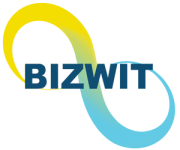Global Hot Water Circulator Pump Market is valued at approximately USD 7.73 billion in 2022 and is anticipated to grow with a healthy growth rate of more than 4.0% over the forecast period 2023-2030. A hot water circulator pump is a small, electric pump that is used in plumbing systems to circulate hot water throughout a building or specific zones. It further helps to maintain a regular supply of hot water at the required temperature and reduces the wait time for hot water to reach appliances or fixtures. The main function of a hot water circulator pump is to uninterruptedly circulate hot water from the water heater to the fixtures, ensuring that hot water is readily available deprived of any delay, even in regions far from the water heater. Growing focus on sustainability and eco-friendly practices and technological advancements in hot water circulator pumps, such as enhanced motor efficiency, smart controls, and wireless connectivity are the most prominent factors that are propelling the market demand across the globe.
Furthermore, the rise in the need for energy conservation and cost reduction, along with the growth of the commercial and industrial sectors are a few factors catalyzing the growth prospect of the hot water circulation pump market. The Building America programme of the U.S. Department of Energy conducted research in collaboration with the private sector to produce community-scale homes that consume 30% to 90% less energy compared to conventional homes with the aim of creating Zero Energy Homes (ZEH) that generate more on-site renewable energy than they consume from the grid by 2020. In addition, an increase in green building codes and regulations is expected to drive the growth of the hot water circulation pump market. Green building codes and regulations associated with energy efficiency, water conservation, and sustainable building practices have significantly influenced the demand for hot water circulator pumps. Many jurisdictions and government bodies are implementing or strengthening regulations that promote energy-efficient and water-efficient plumbing systems, creating a favorable market environment for these pumps. For instance, in China, the Ministry of Housing and Urban-Rural Development issued a General Code for Building Energy Conservation and Renewable Energy Utilization that targets to construct new buildings in line with green building standards and raises buildings’ use of renewable energy from 6% in 2020 to 8% percent by 2025. These aforementioned factors are significantly paving the expansion of the hot water circulation pump market over the forecast period. Moreover, the rise in the proliferation of smart homes, as well as the growing consumer awareness and focus on water and energy conservation presents various lucrative opportunities over the forecasting years. However, the lack of awareness in developing regions and high initial & maintenance costs are hindering the market growth throughout the forecast period of 2023-2030.
The key regions considered for the Global Hot Water Circulator Pump Market study include Asia Pacific, North America, Europe, Latin America, and Middle East & Africa. North America dominated the market in 2022, owing to the rise in the need to conserve energy, reduce water wastage, and ensure a steady hot water supply, along with growing government mandates to maintain green building practices. Whereas, Asia Pacific is expected to grow at the highest CAGR over the forecasting years. Factors such as the increasing demand for new building projects to sustain urbanization and infrastructural growth, along with escalating demand for energy-efficient and eco-friendly products are significantly propelling the market demand across the region.
Major market players included in this report are:
Grundfos Holding A/S (Denmark)
Wilo SE (Germany)
Xylem Inc. (U.S.)
Flowserve Corporation (U.S.)
Armstrong Fluid Technology (U.K.)
Calpeda SA (Italy)
SAER Elettropompe SpA (Italy)
US Solar Pumps (U.S.)
Shimge Pump Industry Group Co., Ltd. (China)
LEO PUMP (China)
Recent Developments in the Market:
Ø In October 2022, Grundfos, the global leader in pump manufacturer, launched the next generation of small circulators for the residential heating market with the introduction of the Grundfos Digital NEXT range — starting with the UPSe 15-58 in late 2022, followed by the proclamation of the new, digital ALPHA 15-58 in early 2023. These circulators have been graded with the highest Energy Rating, revolutionizing the market by providing improved performance and delivering the highest wire-to-water efficiency.
Ø In August 2022, Rinnai America Corporation, a producer of tankless gas water heaters in North America, launched a new RE Series Tankless Water Heater, the first and only non-condensing unit with a built-in pump, featuring Smart-Circ Intelligent Recirculation. This new porudct line of advanced non-condensing tankless water heaters is likely to deliver an improved level of installation ease, along with enriched serviceability, usability, and reliability.
Global Hot Water Circulator Pump Market Report Scope:
ü Historical Data – 2020 – 2021
ü Base Year for Estimation – 2022
ü Forecast period – 2023-2030
ü Report Coverage – Revenue forecast, Company Ranking, Competitive Landscape, Growth factors, and Trends
ü Segments Covered – Technology, Material Type, Flow Rate, End-user, Region
ü Regional Scope – North America; Europe; Asia Pacific; Latin America; Middle East & Africa
ü Customization Scope – Free report customization (equivalent up to 8 analyst’s working hours) with purchase. Addition or alteration to country, regional & segment scope*
The objective of the study is to define market sizes of different segments & countries in recent years and to forecast the values to the coming years. The report is designed to incorporate both qualitative and quantitative aspects of the industry within countries involved in the study.
The report also caters detailed information about the crucial aspects such as driving factors & challenges which will define the future growth of the market. Additionally, it also incorporates potential opportunities in micro markets for stakeholders to invest along with the detailed analysis of competitive landscape and product offerings of key players. The detailed segments and sub-segment of the market are explained below:
By Technology:
Single Stage
Multistage
By Material Type:
Stainless Steel
Bronze
Cast Iron
Others
By Flow Rate:
Upto 2m3/h
Above 2m3/h
By End-user:
Residential
Commercial
Industrial
By Region:
North America
U.S.
Canada
Europe
UK
Germany
France
Spain
Italy
ROE
Asia Pacific
China
India
Japan
Australia
South Korea
RoAPAC
Latin America
Brazil
Mexico
Middle East & Africa
Saudi Arabia
South Africa
Rest of Middle East & Africa



